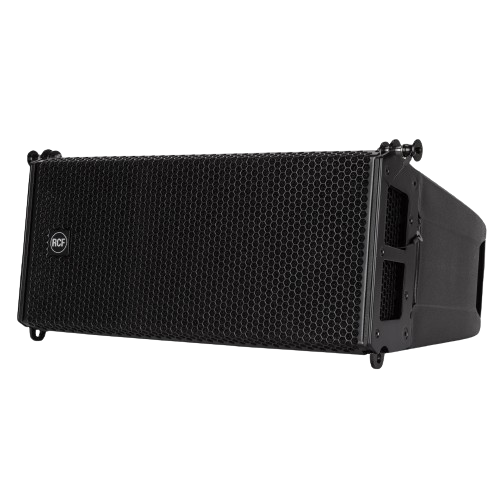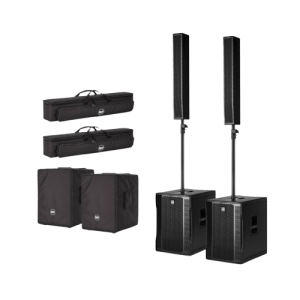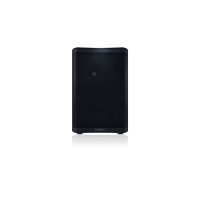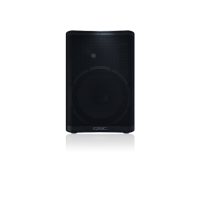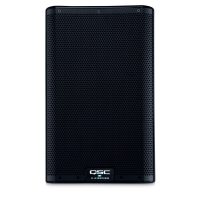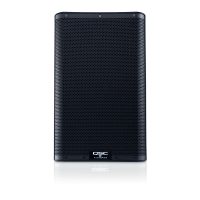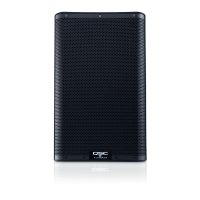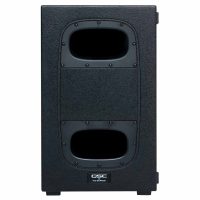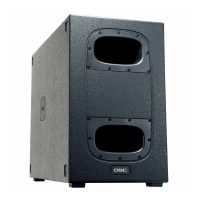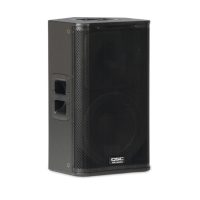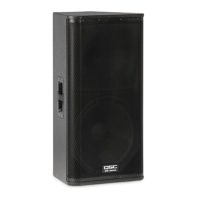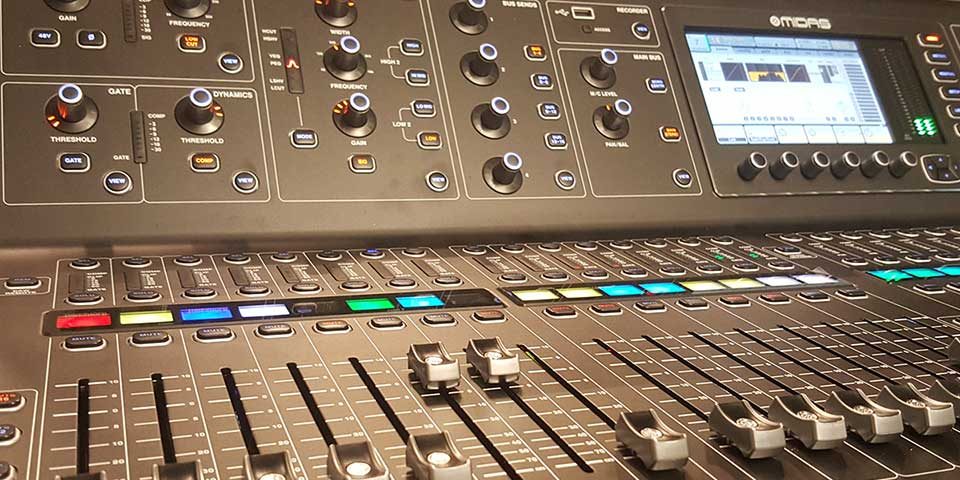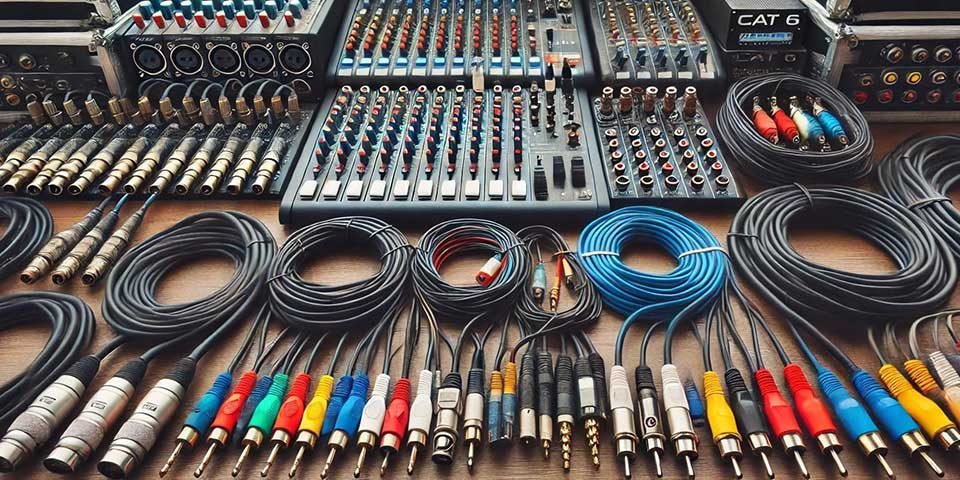
Live Sound Speakers – So Many, How to Decide?

Haze Machine Light Show – Maximizing The Power of Moving Head Lights

Live Sound Speakers – So Many, How to Decide?

Haze Machine Light Show – Maximizing The Power of Moving Head Lights
Line Array Vs Point Source - A Professional Guide
INTRODUCTION
Imagine hosting an event where every note of music and every word spoken reaches every attendee with crystal-clear quality, no matter their location. Now imagine the opposite—muffled sounds that leave your audience straining to hear. The choice between line array and point source speakers isn't just technical; it's about ensuring your event actually sounds as spectacular as it looks. As an experienced audio/visual technician, I've witnessed the dramatic impact the right audio setup can have on an event's success. This is done by understanding and considering the human hearing. So, let's cut through the noise and explore the differences of line array vs point source.
Overview of Speaker Systems
What are Line Array Speakers?
Line arrays stack multiple speakers vertically, which changes the way sound disperses. Unlike point source systems, where speakers are arranged horizontally, line arrays concentrate dispersion issues in the vertical domain. This is significant because human hearing is more sensitive to horizontal differences due to the placement of our ears on the sides of our heads.
What are Point Source Speakers?
Point source systems are the simplest form of speaker setups, involving a single speaker. These systems have their coverage, but often, a single speaker is not enough to cover a large venue. Adding more speakers to point source systems introduces phasing issues due to differences in sound arrival times.
When two speakers are used, phasing issues arise due to the difference in arrival times of sound from each speaker. Spreading the speakers apart and adjusting their angles can reduce, but not eliminate, these issues. The more speakers added, the more complex the interactions between them become, both horizontally and vertically.
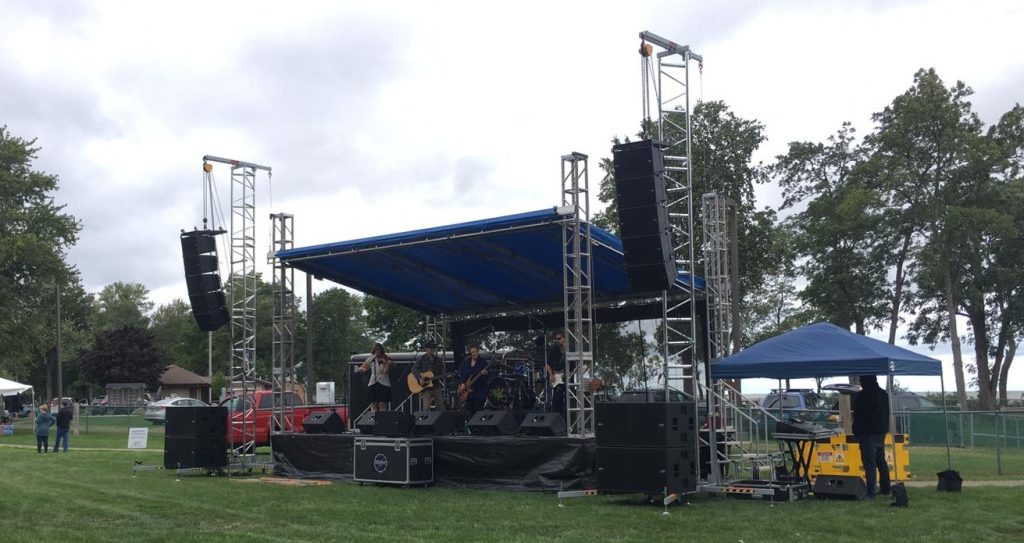
Column Speaker Technology: The Best of Both Worlds
Column speakers combine the focused vertical dispersion of line arrays with the wide horizontal coverage of point source systems, delivering a hybrid solution that excels in sound clarity and coverage. The vertically arranged drivers in column speakers, such as the RCF EVOX 12, concentrate sound energy directly toward the audience while minimizing unwanted reflections from ceilings and floors. This design ensures even sound distribution across wide spaces without compromising clarity, making them particularly effective in venues with challenging acoustics. From houses of worship to conference rooms and live performance spaces, the hybrid technology of column speakers provides precise, intelligible audio where it matters most.
Technical Comparison
Design and Sound Propagation
Understanding the differences of line array vs point source starts with their design. A well-designed line array minimizes horizontal dispersion issues, making the sound more uniform for listeners moving their heads side to side. In contrast, a point source system or a poorly designed multi-speaker setup will have more noticeable phasing and interaction issues horizontally.
Human Hearing Characteristics
Humans have a nearly 360-degree horizontal listening range, thanks to the placement of our ears. We are very sensitive to differences in sound arrival times horizontally but have limited ability to perceive vertical differences. This makes line arrays advantageous, as they pile unavoidable issues into the vertical domain, where we are less sensitive.
Detailed Comparison of RCF HDL 6-A and ART 915-A
Comparing the RCF HDL 6-A line array and the RCF ART 915-A point source sheds light on practical applications. The HDL 6-A and the ART 915-A have some similarities and differences in their frequency response and maximum SPL. Understanding these specs truly helps making informed decisions. Let's have a look.
Power Handling: 1400W peak power
Frequency Response: 65 Hz to 20 kHz
Maximum SPL: 131 dB
Coverage Pattern: 100° horizontal x 10° vertical
Power Handling: 2100W peak power
Frequency Response: 45 Hz to 20 kHz
Maximum SPL: 131 dB
Coverage Pattern: 90° x 60°
Choosing the Right System for Your Needs
When to Choose Line Array Speakers
Technically, line arrays are structured to maintain a consistent sound pressure level (SPL), decreasing by approximately 3 dB for every doubling of distance. These speakers are engineered to operate within a frequency range typically from about 50 Hz to 18 kHz–allowing them to handle a broad spectrum of sounds. The vertical configuration of line arrays, often adjustable between 0° to 10° per module.

Point source configuration is providing a uniform sound dispersion pattern typically within a 90° to 100° coverage angle horizontally and 40° to 50° vertically. This is ensuring an even sound distribution in contained spaces. These units usually handle frequencies from 60 Hz to 20 kH. In technical terms, point source speakers exhibit an inverse-square law regarding sound propagation. The SPL reduces by about 6 dB for every doubling of distance from the source. Furthermore, the simplicity of installation and calibration, often requiring less computational setup than line arrays.

Practical Considerations
During events, listeners often move their heads horizontally but remain relatively stationary vertically. Line arrays take advantage of this by reducing audible issues in the horizontal plane, providing a clearer and more consistent listening experience.
Cost Implications and Installation
Cost-wise, point sources are generally cheaper and easier to install — a significant advantage for one-off events or venues with limited audio tech resources. Line arrays, while more costly, offer a long-term investment for venues frequently hosting large-scale events.
Flexibility and Scalability
Flexibility in audio setup is crucial. Line arrays can be modified by adding or removing modules to suit the audience size, making them incredibly versatile for growing event spaces. Point sources offer less scalability but are often easier to integrate into various architectural styles without being obtrusive.

Measurement vs. Perception
From rock concerts to keynote speeches, the choice between line array and point source can make or break the audio experience. For instance, using a line array at a crowded music festival ensures that even attendees at the back get a clear sound, while a seminar might benefit more from the nuanced sound of point source speakers.
Talking to sound engineers, one common piece of advice surfaces: consider your venue’s acoustics. A line array might be technically superior, but if it's bouncing sound off cavernous walls, you might have a problem. Conversely, point sources might struggle in an open-air setting where sound disperses too widely.
While technical measurements of sound systems can provide data on performance, they do not always account for human auditory perception. Line arrays may measure similarly or even worse than point source systems in some respects, but the human factor makes them more effective in practice.
conclusion
Deciding between a line array vs point source configuration has to do with speaker placement. If you have one speaker per side, point source will be preferable. It will project better in a cone shape, usually 90 degrees by 40 degrees vertically. Dave Rat on Youtube explains the topic of Line Array vs Point Source vs Human Hearing very well. So, whether you choose the HDL 6-A or the ART 915-A, knowing your venue’s speaker placements and audience layout is key to audio perfection.

